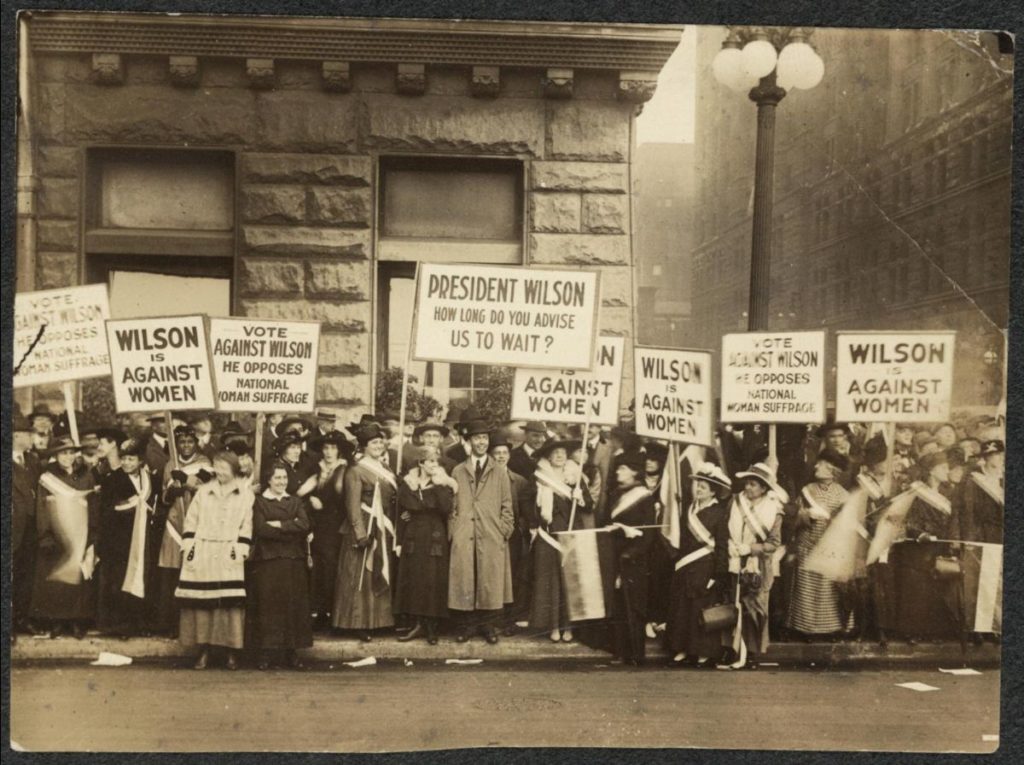In 1971, Representative Bella Abzug called on Congress to designate a day to commemorate the 1920 passage of the 19th Amendment. And in 1973, Congress made it official. So today, Women’s Equality Day, we celebrate some of the truly dangerous women* who fought for our right to vote—including many who were left out of the history books.
Thanks to several new museum exhibitions, these unsung heroes are finally getting their due.

As columnist Virginia Case notes in a must-read, clear-eyed post at The Hill, we need to set aside once and for all the many misconceptions Americans have about the struggles of the suffragists. “In telling the true story behind the 19th,” she writes, “we must… stop perpetuating the myth that women were ‘granted’ the right to vote. Let’s be clear: women ‘won’ the right to vote. It was not ‘given’ to us. It was a fight, decades in the making.”
And, even more importantly, let’s remember that August 26, 2020 will mark the 100th anniversary of the passage of the 19th Amendment—but that the story of voting rights in this country doesn’t end there. In fact, it continues to this day.
The true story of the fight still needs telling. Like many of the incomplete stories we have told ourselves about the history of America, suffrage is no different. For most of the past 99 years, white suffragists like Elizabeth Cady Stanton and Susan B. Anthony were the women credited for leading and winning the fight, downplaying the contributions—and sidelining—of African American suffragists like Sojourner Truth, Ida B. Wells and many others.
In honor of the centennial, three new Smithsonian exhibitions in Washington explore the complicated story of voting rights in America, filling in some of the omissions in the historical record and recognizing that the passage of the 19th Amendment didn’t mean votes for all women.
The National Portrait Gallery offers “Votes for Women: A Portrait of Persistence” through Jan. 5, 2020. In this thoughtful exhibition, part of the Smithsonian’s American Women’s History Initiative curated by Kate Lemay, you can see pictures of Anthony and Cady Stanton, but also nearly 60 lesser-known women—such as African American poet and activist Frances Ellen Watkins Harper, who challenged Stanton and Anthony at the 1866 National Women’s Rights Convention. It also makes clear that it wasn’t until the Voting Rights Act of 1965 that the 19th Amendment was fully realized.
The Library of Congress exhibit, entitled “Shall Not Be Denied: Women Fight for the Vote” (through September 2020), explores the history of the struggle before 1919 and also delves into the savvy mass marketing campaign that accompanied the push for ratification in the early 20th century. “That was one of the more fun things to research,” Janice Ruth, the lead curator, told The New York Times in an interview. “It revealed their cleverness, astuteness and doggedness, along with the desire and need to raise money.”
Lastly, “Rightfully Hers: American Women and the Vote,” at the National Archives through Jan. 3, 2021, reminds us just how incremental and fractured the suffragist movement was. Before 1919, women in 15 states, mainly in the West, were allowed to vote and their participation propelled the momentum behind ratification. The exhibit also highlights other key moments that reveal the racism in the struggle, like the 1913 Women’s Suffrage Parade in Washington, DC, in which all-around dangerous woman Ida B. Wells refused to march in the back as the organizers had demanded.
If you can’t make it to Washington, the Smithsonian’s “Because of Her Story” interactive website, part of the Smithsonian Women’s Initiative, offers some great content about suffragettes and stories about other women you may not have heard of who continued the fight—including Mary Church Terrell, suffragist and civil rights activist, and Freedom Rider Joan Trumpauer.
There are also several great PBS documentaries that profile suffragettes, like Sojourner Truth, Alice Paul, Elizabeth Cady Stanton and Susan B. Anthony, Ida B. Wells—and, of course, Eyes on the Prize, which chronicles the Civil Rights Movement.
This Women’s Equality Day, let’s celebrate the ratification of the 19th Amendment. It’s truly a big deal: There have only been 27 amendments passed in the history of the country! But let’s not forget that we’re still waiting for the ratification of the Equal Rights Amendment, nearly 50 years after it was passed.
But in addition to celebrating, let’s also keep our eyes on the prize: true equality in pay, in electoral representation, in business and in every sector of society. Make no mistake: Equality is a fight, one that must be waged in solidarity—and one that we must win for the good of all of us.





